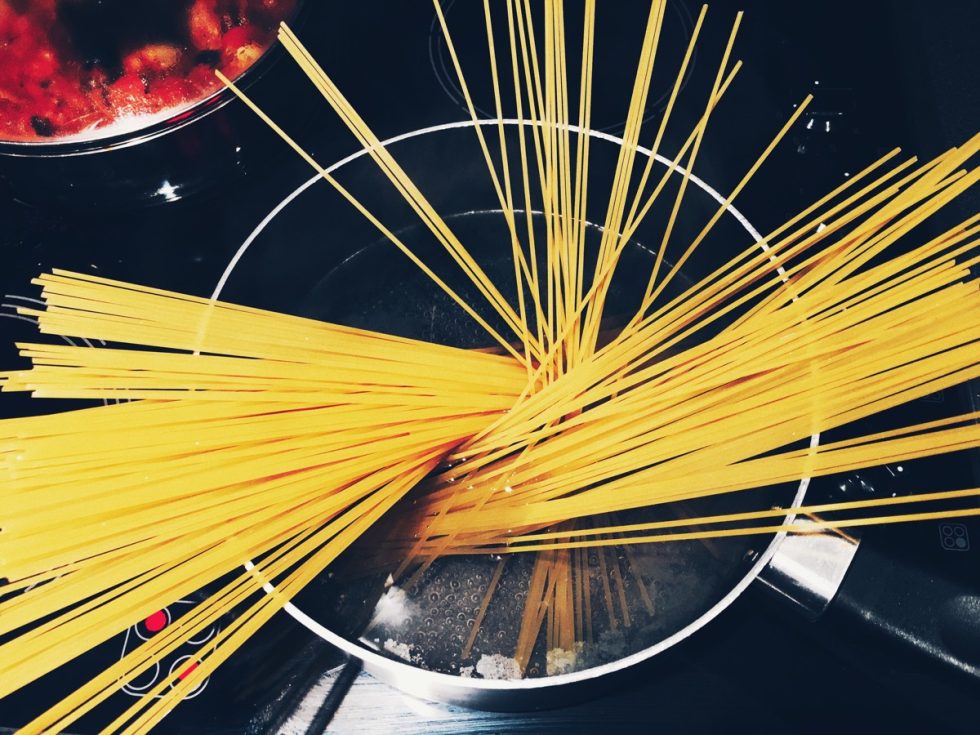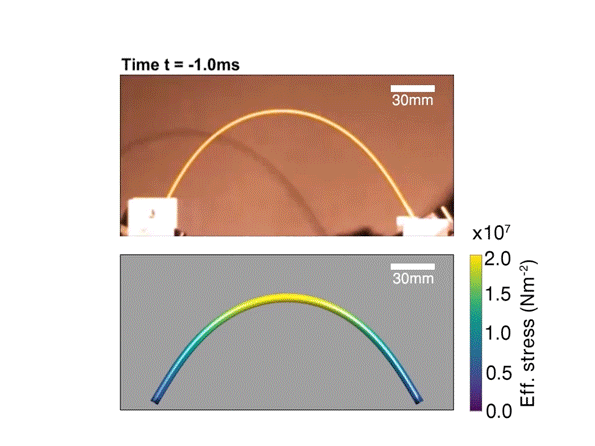
Pasta purists insist on plonking dry spaghetti into the boiling pot whole, but should you rebel against convention and try to break the strands in half, you'll probably end up with a mess of scattered pieces.
Now, two MIT mathematicians have figured out the trick to breaking spaghetti strands neatly in two: add a little twist as you bend. They outlined their findings in a new paper in the Proceedings of the National Academy of Sciences.
This isn't the first time scientists have been fascinated by the physics of breaking spaghetti. The ever-curious Richard Feynman famously spent hours in his kitchen one night in a failed attempt to successfully break spaghetti strands neatly in half. It should have worked, he reasoned, because the strand snaps when the curvature becomes too great, and once that happens, the energy release should reduce the curvature. The spaghetti should straighten out and not break any further. But no matter how hard he tried, the spaghetti would break in three or more pieces.
It wasn't until 2006 that a pair of French physicists successfully explained the dynamics at work and solved the mystery. They found that, counterintuitively, a spaghetti strand produces a "kick back" traveling wave as it breaks. This wave temporarily increases the curvature in other sections, leading to many more breaks. (You can see slow motion videos of shattering spaghetti here if that's your jam.) Basile Audoly and Sébastien Neukirch won the 2006 Ig Nobel Prize for their insight.
Then, in 2015, two MIT students in search of a final project set out to discover if there was any way to control those natural forces to achieve a neat, clean break. Ronald Heisser (now a graduate student at Cornell) and Edgar Gridello found that twisting the spaghetti and bringing the ends together would cause the strand to break in half—but it required a pretty strong twisting motion.
Intrigued, Heisser built a special spaghetti-snapping device with a clamp on either end to hold the strand. One clamp would rotate the strand while the other clamp would slide toward its partner until the strand broke. He and MIT grad student Vishal Patil then subjected hundreds of spaghetti strands to the test, recording how each one broke.

This isn't just fun and games for the sake of idle curiosity (not that there's anything wrong with that). A collaboration between Audoly and Columbia University computer scientist Eitan Grinspun led to developing an Adobe paint brush that bends and moves, introduced in Adobe Illustrator 5 and Adobe Paint Brush 5. The MIT scientists say their new work could be used to better understand how cracks form and spread in similarly structured materials and brittle structures—bridge spans, for instance, or human bones. The secret could lie in the pasta.
One caveat: the technique only works on cylindrical-rod shaped pasta like spaghetti (in this case, Barilla No. 5 and Barilla No. 7). You don't want to try it with a more ribbon-like linguine, for instance—although what kind of culinary monster would try to break linguine in half before cooking?
DOI: PNAS, 2018. 10.1073/pnas.1802831115 (About DOIs).
reader comments
295